Reprinted with permission from Hinduism Today
https://www.hinduismtoday.com/modules/smartsection/item.php?itemid=5879
“What you learned is a handful of dirt; what you haven’t learned is the Earth.” I grew up hearing my mother repeat this quotation from Avvaiyar, the Tamil poet-saint, while she tried to make education fun for me. This idea, planted firmly in my mind, has enabled me to study homeopathy and establish a practice in the US where a small part of my clientele are people with unresolved psychological and emotional issues. I have found homeopathy to be harmonious with my Hindu and Saivite upbringing. Most of my homeopathy teachers, including Dr. Divya Chhabra, are from India. When Dr. Divya invited me to her clinic in Mumbai to learn her unique homeopathic case taking method, “Leap to the simillimum” (for finding the remedy that is most likely to restore health), I accepted readily and wondered if I might discover how Indian practitioners use homeopathy to address mental suffering.
Divvya Chhabra
Soon after reaching Mumbai, I hailed a cab for Sun and Sand Hotel, Juhu. En route, I conversed with the cabbie, Mehboob. After learning that I am a homeopath visiting India to further my education, Mehboob showed me a card, “For Rs. 80 per year, this card lets me receive unlimited homeopathic treatment for myself and family in a clinic run by Punjab Kesari, a social work organization.” Unexpectedly, within minutes of my arrival in India a cabbie was telling me about his devotion to homeopathy: “I swear by God—after experiencing deep healing from homeopathy, you will not look elsewhere.”
Mehboob
“Deep healing” became a much-contemplated concept during my stay. Dr. Divya told me, “For deep healing, you must go past human delusions, cross the metaphoric wall separating the conscious from the unconscious and find the remedy that is revealed from the patient’s unconscious mind.” She explained that her practice of classical homeopathy is based on the teachings of Jung and Freud and their understanding of the unconscious mind.
Homeopathy was founded by Dr. Samuel Hahnemann, MD (1755-1843) while trying to understand the mechanism of the medicinal action of Peruvian bark in the treatment of malaria. After decades of experimentation, Hahnemann established homeopathy as a medical science based on natural laws; for example, the Law of Similars. He recognized disease as a dynamic disturbance in the vital force. To counteract the disease state, he created a method of dilution and succussion that resulted in dynamization of raw medicinal substances, so that a dynamic disease state could be cured by a dynamic remedy, when it is selected on the basis of the Law of Similars. Beyond this, he gave no further explanation.
Presently, nanotechnology is able to measure changes in coherence and cluster formation of water molecules when they are exposed to electromagnetic energy and demonstrate that the dynamic process of serial dilution and succussion creates an energy field that enables water molecules to memorise the substance they have come in contact with. Based on this memory, a water molecule cluster formed after exposure to gold is totally different from clusters formed after exposure to sea salt. These unique water clusters are used in preparation of homeopathic remedies; and when given on the basis of the Law of Similars they are able to disperse in the body via fluids, and convey the information of the healing potential of the raw substance they have come in contact with, and elicit clinically, subjectively and objectively observable changes in symptoms.
Dr. Bhawisha and Sachindra Joshi: This innovative husband and wife treat the whole person, not just the immediate diagnosis
Though Hahnemann did not have the scientific vocabulary and technology of the 21st century, he had created a new system of medicine. Patients came to him from afar. With a non-invasive, natural, logical and straightforward approach, he cured the sick and re-established balance in their vital force.
Hahnemann’s work spread worldwide. In the early 1900s, the American Medical Association teamed up with pharmaceutical companies and suppressed medical doctors in the US from practicing homeopathy. Anti-homeopathic groups calling themselves “scientific” began spreading misinformation: “Homeopathic remedies are diluted to the point that they do not contain even a molecule of the medicinal substance. How can they cure? Homeopathy is a placebo effect.” The natural laws that govern disease and health, the role of the vital force, clinical evidence and the unique method of choosing and preparing medicines that match the patient’s disease state were completely disregarded. To this day, opponents of homeopathy brush aside evidence coming from nanotechnology laboratories of the Indian Institute of Science, research work on the memory of water, and the proofs from the laboratory of Nobel Laureate Luc Montagnier. Truth be told, the burden of proof, for those seeking it, does not lie with homeopathy but rather with the 18th-and 19th-century mechanistic model of science whose limitations prevent it from seeing beyond the visible.
In India, homeopathy was never suppressed. Over 207 medical schools teach homeopathy, and over 100 million Indians use only homeopathy for their medical care. It is popular among the common people, like the cabbie, Mehboob, as well as celebrities. There are over 200,000 practicing homeopaths, and 12,000 graduates are added annually.
In terms of clinical application and research in homeopathy, India is the world leader. Prime Minister Narendra Modi has established AYUSH, a ministry that promotes Ayurveda, Yoga, Unani, Siddha, Homeopathy, Naturopathy and Sowa Rigpa as viable medical care systems for the country.
What makes homeopathy so successful in India? In my view, the Vedic and Ayurvedic understanding of man and nature prepares India to embrace and assimilate homeopathy, which has many principles and laws that are totally consistent with India’s ancient Vedic philosophy. Take for example what is called “case-taking.” This is the homeopathic science and art of listening, observing, asking questions and conducting extremely detailed inquiry about the presenting complaint, its time-line, and the entire personality of the patient so that a highly individualized picture of the state of their body, mind and emotions emerges clearly. This information allows the homeopath to understand the disease process and choose an individualized remedy on the basis of the law of similars that would restore balance to the vital force.
While staying true to the principles of homeopathy, Indian homeopaths have pioneered many different case-taking and treatment methods suitable for our complex and hectic modern life. For example, Dr. Bhawisha and Sachindra Joshi, my teachers, have come up with a method of plotting human maturity, growth and developmental stages on a periodic table grid as used for the elements. They have extended the same idea to the entire animal kingdom and used the natural behavioral patterns of animals for plotting them in a similar periodic table. During case-taking, they look for parallels between human and animal behavior as well as energies for selecting a suitable remedy from the animal kingdom for their patients.
Following this method, the Joshis have reported astonishing cures for many different ailments. The Joshis say, “Homeopathy is so individualized, it takes into account the entire personality of the patient. Irrespective of the case-taking method, it brings about deep and lasting healing. No matter what the disease is—tonsillitis, eczema, asthma or depression—in every single case, when we consider the whole person and not just their diagnosis, we can prescribe remedies that remove the problem from inside out without any suppression and side effects.”
Dr. Dinesh Chauhan an international teacher with a thriving charitable and volunteer work in India, has pioneered a “Scientifically intuitive case-witnessing process.” His style, an offshoot of the Sensation Method, is designed to ask a minimum number of questions to get to the simillimum. Once a remedy exactly similar to the core inner state of the patient has been achieved, Dr. Chauhan creates a space where the patient is able to observe his entire energy pattern and behavior. Dr. Chauhan claims that by mirroring the inherent patterns and energies back to the patients, the homeopathic healer becomes the very first simillimum to the patients. Dr. Chauhan reports that patients with severe psychologically disruptive states get better after undergoing the “scientifically intuitive case-witnessing process”—even before any remedy is administered—because now they know themselves fully.
Indian homeopaths I have studied with have shown a deep understanding of the stages of human development, from gestation to death, but not just in terms of the birth, growth and death of the physical body. They understand the spiritual, mental and emotional development of human beings and how life begins in the creative principle of the feminine energy, moves through the seven chakras, and ends in the transformative principle of the masculine energy. Each of these energies, like Shiva and Shakti, is essential for the existence and completion of the other. Steeped in this knowledge, a homeopath is able to have a person describe his life narrative and express his experiences of family dynamics, gestation and birth process and the developmental stage, where he might be stuck and where he manifests disease symptoms. Then, receiving a homeopathic remedy that matches and reflects the developmental stage he is stuck in brings on profound healing.
Sharing India with USA: Dr. Dinesh Chauhan (far left) meets with homeopathic practitioners in a Massachusetts seminar (our author is seated on the far right).
Dr. Divya Chhabra, one of the author’s teachers, with a clinic in Mumbai
Serial dilution and succussion: These are the foundations of homeopathic pharmacopeia. Medicating potency (1C) is made by mixing one drop of themother tincture with 99 drops of alcohol-water mixture and succussing(shaking vigorously) 100 times. Thirty repetitions of this process gives 30C medicating potency. Addition of a few drops of medicating potency to blank lactose pills gives a 30C remedy. The material form of the original medicinal substance does not exist beyond 12C (Avogadro’s number). After this potency, the medicinal substance exists in nano-particles. A remedy prepared by serial dilution and succussion, and selected according to the Law of Similars (simillimum), can balance the Vital Force and cure the symptoms it is able to produce when ingested in raw form. Natrum muriaticum, diluted sea salt, helps with headaches. Arnica, from the plant Wolf’sBane, helps with sore muscles. Euphrasia, from the plant Eyebright, helps with eye discharges.
HOMEOPATHY, A LIFE PATH
I come from a background of hardcore science. With a doctorate in clinical microbiology, I have served as the chief of clinical microbiology services in a multi-specialty children’s hospital in India and worked for years alongside accomplished medical doctors and surgeons. I am a homeopath now because homeopathy speaks to my innate nature and view of life.It occurs to me that, in being human, we are very much a part of nature, which encompasses other animals, minerals and plants. According to the Vedic enunciation, “Vasudhaivakutumbakam,” The whole world is one family. When one component of nature suffers, other parts of nature offer salvation. Homeopathy has successfully grasped and employed this philosophical concept for the amelioration of human suffering.
From my homeopathic adventures in India, I returned home fully convinced that, truly, every client is a spiritual being on a path and stage of inner development that is unique to him; and in this moment in time he is experiencing illness due to an imbalance in his vital force. When a suitable homeopathic remedy is administered that mirrors the sick state, his vital force will shine once again and he will be well again. Both health and disease have a higher purpose. We can choose to view disease as a punishment or as an opportunity for learning the lessons we are meant to learn during our spiritual growth and development. Homeopathy allows for such contemplation and offers support to the vital force so that it can accomplish its higher purpose in life.
The Other Song Academy
Inspired by the Vedic view of the natural world, contemporary homeopathic thinker Dr. Rajan Sankaran has developed a homeopathic approach he calls the Sensation Method. He proposes that in the sick state, our Vital Force stops playing a healthy music that is natural to it and begins to play an erratic tune loudly. He calls it The Other Song and explains that the symptoms and sensations expressed by the body, mind and spirit during illness are nothing but the sounds of this erratic tune. This is how the Vital Force draws our attention to what needs to be healed and cured. In his research of over 30 years, Dr. Sankaran has found that erratic tunes of the human Vital Force are mirrored by the natural characteristics of the non-human components of nature, which can be used for preparing homeopathic remedies using Hahnemann’s method of trituration, dilution and succussion. During homeopathic case-taking by the Sensation Method, the patient—by way of expressing energy and describing his complaints—reveals, unbeknownst to himself, the specific source in nature from which his Vital Force draws an erratic tune for the expression of his symptoms. When a remedy indicated by the patient is administered to him as per the Law of Similars, he experiences a remarkable cure. Using Dr. Sankaran’s Sensation Method, practitioners from around the world report over 80% success rate in treating their patients.
During my stay in Mumbai, I visited Dr. Sankaran’s institute, aptly named The Other Song Academy, and met the dean, Dr. Meghna Shah, faculty members and a group of international students. Dr. Meghna pointed out, “At The Other Song Academy we provide comprehensive postgraduate homeopathic medical training and offer patients highly individualized homeopathic treatment in combination with meditation, yoga, lifestyle modification and balanced nutrition.”
Using the sensation method: Dr. Rajan Sankaran (center, blue shirt) has assembled a team with dean Dr. Meghna Shah (back row, fourth from left)


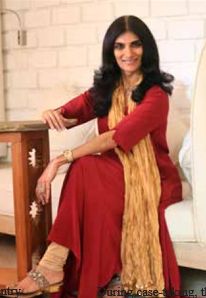
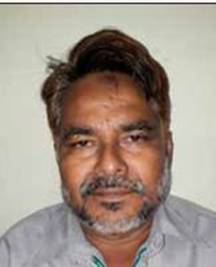
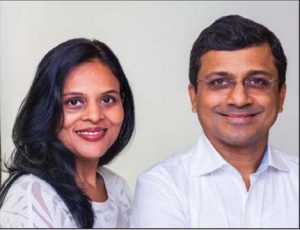
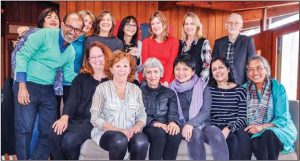
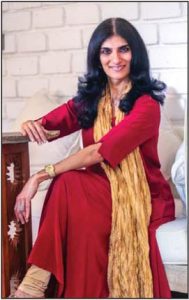
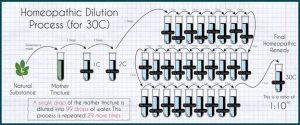

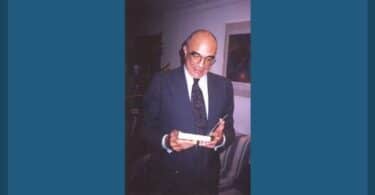

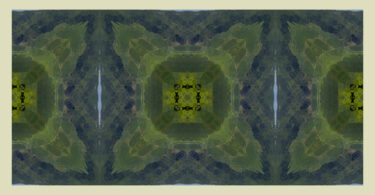
DEAR DR,
IT WAS MENTIONED THAT TO RAISE ONE POTENCY ONLY 10 SUCCESS[SHAKING] ARE REQUIRED. ONE DR STATED THAT IT SHOULD BE SHAKEN 40 TIMES. IN THIS ARTICLE IT IS STATED THAT IT SHOULD BE SHAKEN 100 TIMES. I THINK EXCESS OF EVERY THING IS NOT GOOD. PL LET ME KNOW WHAT IS THE CORRECT POSITION?
THANKS
[email protected]